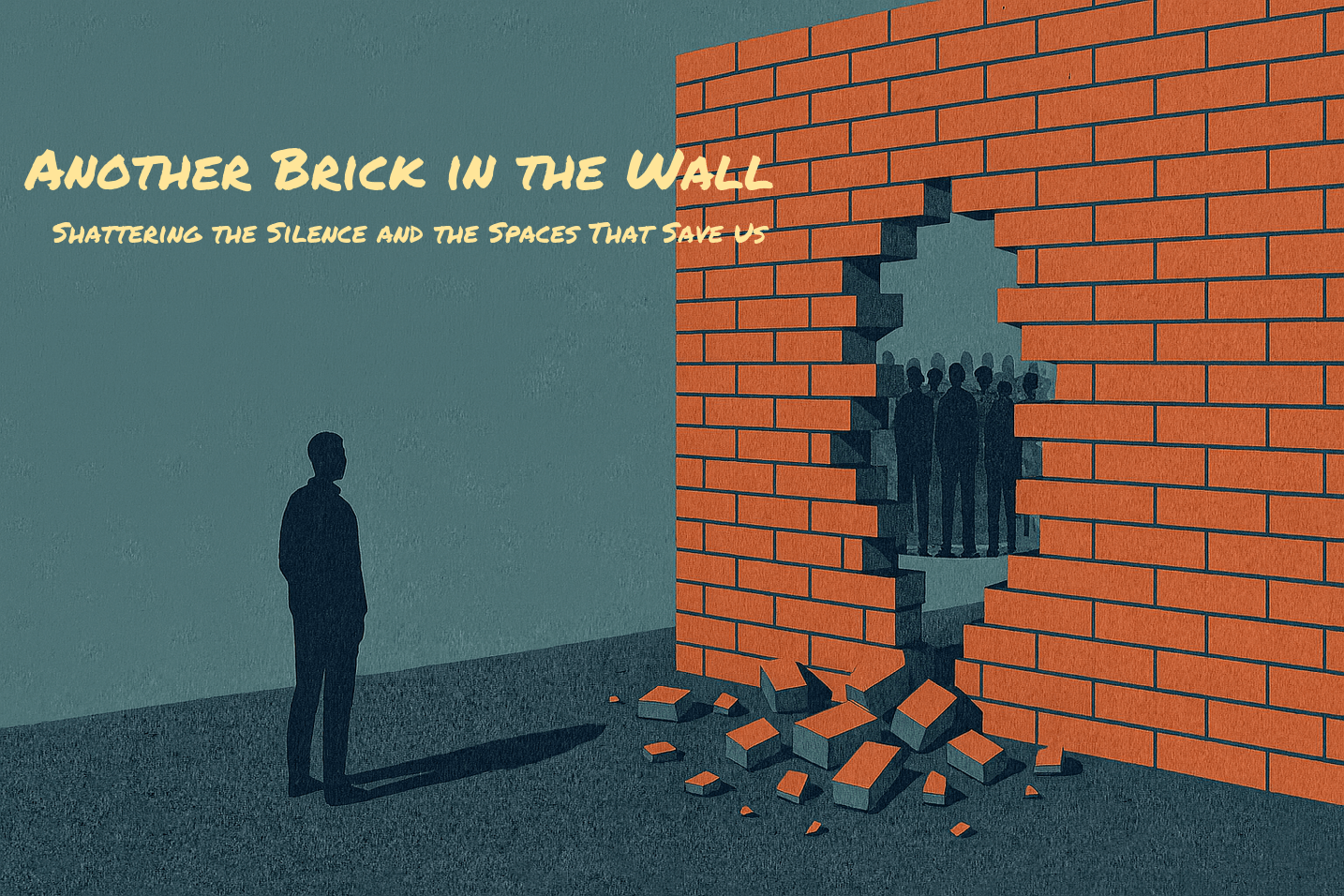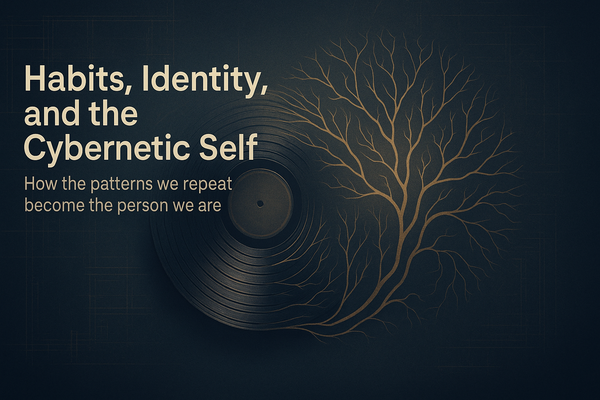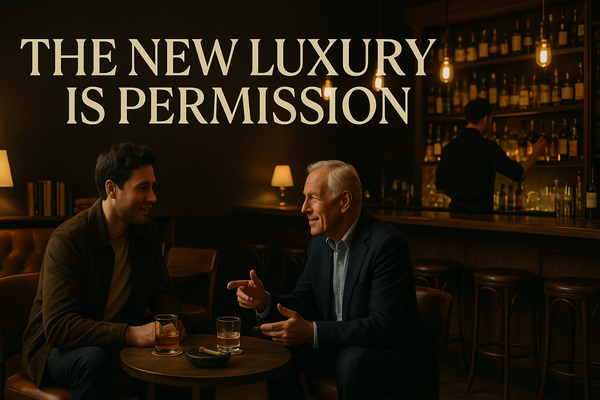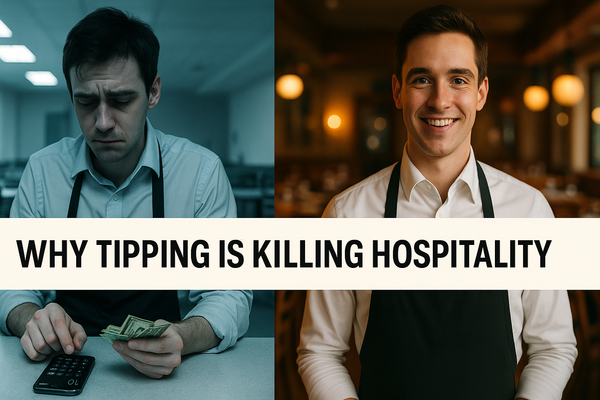Another Brick in the Wall: Shattering the Silence and the Spaces That Save Us
On loneliness, belonging, and the quiet rebellion of spaces that remember what it means to be alive together

I. The Sound of Silence
Hello darkness, my old friend.
There's a particular kind of silence in the modern city. Not the absence of sound (cities are never quiet) but the absence of connection. Ten thousand people, maybe more. People talking without speaking. People hearing without listening.
And the silence, like a cancer, grows.
Simon and Garfunkel wrote those words in 1964, but they could have been describing your Tuesday morning. The coffee shop where everyone sits alone with headphones. The apartment building where neighbors don't exchange names. The feeds that promise connection while ensuring isolation.
The silence isn't just absence; it's malignancy. It spreads through communities, through cities, through entire cultures. Each person retreating. Each disconnection making the next easier. Each wall making the next feel necessary.
We built cities for density and called it community. We created proximity without presence, crowds without connection. The loneliness epidemic has measurable mortality rates now. Social isolation kills as reliably as smoking 15 cigarettes a day.
But the studies can't capture this: the feeling of being surrounded by people and still being utterly alone. The exhaustion of performing connection without experiencing it. The slow realization that you could disappear and nobody would notice for days.
That's the sound of silence. And like a cancer, it grows.
II. The Walls We Didn't Build
But there's something underneath the loneliness. Something more intentional than drift.
We don't just happen to be divided. We're kept that way.
All in all, you're just another brick in the wall. Pink Floyd warned us. The walls are everywhere. Race. Class. Religion. Politics. Gender. Economics. Every line that can separate humans into manageable, predictable, profitable categories.
And here's the uncomfortable truth: divided humans are easier to control.
Joseph Goebbels understood this with chilling precision. Keep people isolated. Keep them anxious. Keep them uncertain. When people are separated from their neighbors, they can't compare notes. They can't organize resistance. They can't recognize what's happening.
Anxious people are malleable. Isolated people verify truth only through centralized sources. Divided people can't build collective power.
Division dilutes humanity. It makes us faceless names, just bricks in the wall.
When we're sorted into categories, we stop being individuals with stories and become statistics. Demographics. Target markets. You can't do terrible things to people you actually know. But a category? An "other"? That's easy to manipulate. Easy to fear. Easy to use.
The algorithms keep us in separate bubbles. The news cycle profits from outrage. Every platform optimizes for division rather than connection. When we're tribal, when we're afraid of each other, we're not just divided. We're distracted.
Together we stand, divided we fall.
Authoritarian regimes always go after the third places first. The cafés. The clubs. The gathering spaces. Because that's where people talk directly. That's where the narrative falls apart. That's where solidarity forms.
The wall serves someone's interest. Just not ours.
III. But In Certain Rooms
And yet.
Walk into certain spaces on any Tuesday night and you'll witness something that shouldn't be possible in 2025. Something quiet. Something radical.
A cigar lounge where the CEO sits beside the contractor, the artist shares a lighter with the surgeon, the progressive and the conservative discover they love the same cigar and both worry about their kids.
A jazz club where the audience falls silent when the saxophonist takes a solo, nervous systems synchronizing to the same rhythm.
A coffee shop where the barista knows your name and the regular introduces you to someone who becomes a collaborator who becomes a friend.
These are sanctuaries becoming communities.
They're doing something our city planners forgot, something our apps can't replicate, something our algorithms actively prevent: creating the conditions where humans remember they're the same species.
Where the bricks become people again.
IV. How Rituals Break Walls
Here's what makes the great spaces different:
You can't rush it. You can't fake it. You can't optimize it.
The cigar burns at the same rate whether you're wearing a Patek Philippe or work boots. The music hits everyone's nervous system identically. The coffee cools at the same speed.
The ritual is the equalizer. And the equalizer breaks the wall.
Sit next to someone different from you long enough, doing the same thing, unable to hide behind your phone or your status, and something shifts. You start talking. Then listening. Then you realize the person you were supposed to fear is just another human trying to make sense of being conscious on a spinning ball.
The walls don't disappear. But they become secondary to the shared experience of being alive, right now, together.
The labels fall away. The brick becomes a person. And once you've seen someone as fully human, once you've shared a laugh, a story, a struggle, the division stops working.
You can't hate someone you've smoked a cigar with.
V. The Democracy of Presence
The great sanctuaries cross every line. All of them.
Race. Creed. Religion. Sex. Gender. Economics. Politics. Age. Education. Every wall society builds, these spaces prove the walls are artificial.
Not through force or policy. But through structure. The experience itself creates equality that ideology can't mandate.
When you're sitting in cigar smoke or listening to live jazz or nursing a carefully pulled espresso, the usual scripts don't apply. You can't perform for 90 minutes. The ritual strips away the performance.
And what's left? Just humans finding unexpected common ground.
The format creates the conditions. The conditions create the connection. The connection reveals the truth.
The wall needs us to be bricks: faceless, interchangeable, sorted.
The sanctuary reminds us we're people: complex, individual, deserving to be known.
VI. The Ancient Technology
This isn't new. We're remembering.
The Parisian cafés where existentialism was born. The Viennese coffeehouses where Freud theorized while artists argued nearby. The jazz clubs of Harlem and Kansas City where racial mixing happened decades before it was legal. The folk clubs in Greenwich Village. The punk venues in '70s London.
These weren't just places where culture occurred. They were the infrastructure that made certain kinds of culture possible.
Coffee and conversation. Music and communion. Smoke and contemplation. These pairings have always created conditions for humans to remember what they are underneath the noise.
We nearly lost this knowledge. Fifty years of spaces optimized for transaction speed. Drive-throughs, self-checkout, contactless everything. And we wonder why community disappeared.
But the old technology still works. The cigar lounge, the listening room, the specialty coffee bar: they're restoration projects. Bringing back the social technology that actually functions.
VII. The Economics of Belonging
Most businesses optimize for transaction volume. Get them in, get them out, next customer.
The sanctuaries that work optimize for relationship depth over transaction breadth.
Call it "return on interaction." Every regular who becomes a friend who brings another friend who introduces someone else: this is compound interest on human capital.
The membership models, the event calendars, the reservations requiring connection: these aren't exclusivity. They're rhythm. They're building the cadence of ritual into people's lives.
This is the Go-Giver philosophy: your value is determined by how much more you give than you take. In sanctuaries that work, everyone understands this intuitively.
The regular who introduces two people. The member who shares knowledge, connections, experience because that's what you do. The bartender who remembers your story, not just your order.
The paradox: people who show up to give, receive more than they could have extracted by taking.
Commerce and community aren't enemies. They're dance partners. The businesses that win create the conditions for community to flourish.
VIII. Design as Destiny
Walk into a truly great sanctuary and pay attention. The lighting isn't just mood; it's psychology. Warm enough for intimacy, bright enough to see faces. Dark enough to lower guards, light enough to encourage connection.
The sound curates sonic texture at exactly the right volume. Too loud, people can't talk. Too quiet, every conversation feels exposed.
The furniture choreographs social dynamics. High tops for stand-up encounters. Banquettes for lingering. That slightly separated nook where deeper dialogue happens naturally.
Every element is the architecture of connection and belonging. Sound, light, flow: all serving one question. How do we make people feel simultaneously energized and at ease?
The best spaces feel like they've always existed. They have what the Japanese call ma: the meaningful void, the space between things that gives them relationship.
This is why you can't franchise magic. The design has to be felt, not calculated.
IX. The Personal Proof
Cigar culture hasn't just shaped recent years of my life. It's made me better. My network has blossomed not from networking, but from showing up. Being present. Sitting beside people I'd never otherwise encounter.
I've become better through sustained proximity to people different from me, doing something requiring patience and presence.
This is the proof that isn't in studies. It's in the transformation when the sanctuary works. From isolated to connected. From performing to being. From alone in a crowd to known in a community.
From being just another brick to being seen as a whole person.
That transformation is available to anyone willing to show up, stay present, participate fully. But you can't app your way into it. You have to actually go somewhere and be there long enough for something real to happen.
X. Stewardship, Not Service
The operators building these sanctuaries understand something fundamental: they're not in the service industry. They're in the relationship business.
Not managing transactions; cultivating culture. Not maximizing quarterly returns; building something that compounds over years.
These are custodians of cultural memory and architects of cultural future.
They're asking different questions: Not "what do people want?" but "what does this community need?" Not "how do we scale?" but "how do we sustain?"
This is civic work disguised as commerce. The commons rebuilt by people who understand that creating a space people return to means building social fabric.
They're also building counter-propaganda infrastructure. Democratic infrastructure. Spaces where people talk directly, across difference, discovering that the "enemy" the algorithms point to is just another human with similar concerns.
XI. The Antidote
Let's be clear about stakes.
The loneliness epidemic is killing us. Literally. The silence, like a cancer, grows. And institutional responses have failed. You can't solve a disconnection crisis with apps, hotlines, campaigns. You can't policy your way out of a problem that's fundamentally architectural.
But you can build your way out.
The sanctuaries are chemotherapy for the cultural cancer. They don't treat symptoms. They attack the silence itself. They target the malignancy of isolation at its source. They create conditions where the cancer of disconnection can't survive.
Every person who walks into one of these spaces and feels known, who sits beside someone different and discovers common ground, that's one less person drowning in isolation. One less brick in the wall.
XII. Breaking the Wall
Here's the thing about walls: they're made of bricks. Individual units stacked to create separation.
But bricks aren't inherently divisive. They're just materials. They can build walls or they can build something else entirely.
We break the wall. We take the same bricks (race, class, religion, gender, politics) and turn them into a living thing.
Not a wall. A hearth. A foundation holding us together instead of keeping us apart.
The bricks don't disappear. They just get reconstructed into something serving life instead of control. Something creating warmth instead of division.
Same materials. Different arrangement. Different outcome.
Division dilutes humanity, reducing us to faceless categories. The sanctuary restores humanity, revealing us as individuals worth knowing.
The wall needs us isolated, anxious, controllable.
The sanctuary makes us present, connected, free.
XIII. Together We Stand
Pink Floyd had it right. Simon and Garfunkel saw it clearly. They diagnosed the disease decades ago.
But here's what the songs couldn't tell us: the cure.
It's not coming from the top down. It's not policy or technology. It's not a program or an app.
It's simpler and older. People creating spaces where other people remember what they are underneath the noise. Where walls crack. Where silence breaks. Where bricks become something alive.
The cigar lounge where every line gets crossed naturally. The jazz club where music synchronizes us. The coffee shop where strangers become friends.
Sanctuaries becoming communities. Commerce meeting commons. The quiet rebellion of spaces that remember what cities forgot.
And it's working. Not everywhere. Not perfectly. But enough to show what's possible. Enough to give us a map back.
The loneliness epidemic has an antidote. It smells like cigar smoke and sounds like jazz and tastes like carefully pulled espresso and feels like belonging.
XIV. What We're Really Building
Strip away the business models and design principles and cultural commentary, and here's what remains:
We're organic androids with brief moments of consciousness, trying to figure out what to do with the time we have.
That's it. That's what we are.
And the great sanctuaries are just spaces that help us remember. Not through preaching or programming, but through the simple act of being present together long enough that the masks slip.
Being alive. That's what it's all about.
Not productivity. Not optimization. Not status. Just the raw fact of being alive, together, right now.
Tasting something. Hearing something. Talking to someone. Laughing. Sitting in comfortable silence. All the things that remind us: I'm here. You're here. We're both here. We are together.
That's what the sanctuaries give us. Permission to be alive.
And in 2025, when algorithms want us divided and systems profit from isolation and walls keep getting higher, that permission might be the most valuable thing anyone can offer.
XV. The Work Ahead
Building sanctuaries that work, that last, that change lives: it's hard. It requires operators who think in years rather than quarters. Who understand culture compounds slowly and can be destroyed quickly.
It requires rejecting the pressure to scale prematurely, to franchise the magic, to optimize away the inefficiencies that make it work.
But for those who do it right, the return isn't just financial. It's knowing you built something that changed lives. That became the place people remember. That gave people permission to be alive when everything else was teaching them to perform.
That turned bricks back into people. That broke the silence. That proved the walls were never as permanent as they seemed.
That's not a business. That's a calling.
XVI. Closing Time
There's a moment at the end of every great night. Music winding down. Lights coming up slightly. Everyone getting ready to leave but nobody really wanting to.
That's the feeling we're chasing. That sense of: this mattered. This was real. I'm different because I was here.
That's what the sanctuaries give us. Not just a place to spend hours, but a space where we remember what we are and who we can be when we're together.
The walls are still there. The loneliness still epidemic. The systems still profiting from division. The silence still threatening.
But in certain rooms, something different is happening. Something quiet and radical and impossibly human.
The bricks are being rearranged. The walls are cracking. The silence is breaking.
And we're remembering: together we stand.
Not because someone told us to. Not because it's profitable or optimal or efficient. But because it's true. Because it's who we are. Because it's what we need to survive.
The future of hospitality isn't service. It's stewardship.
The future of business isn't extraction. It's cultivation.
The future of cities isn't density. It's connection.
And the future is being built right now, one sanctuary at a time, by people who understand that the best businesses don't just serve customers. They save lives.
We break the wall. We turn the bricks into a living thing. And in rooms filled with smoke and sound and the shared experience of being alive, we remember.
Together we stand.




